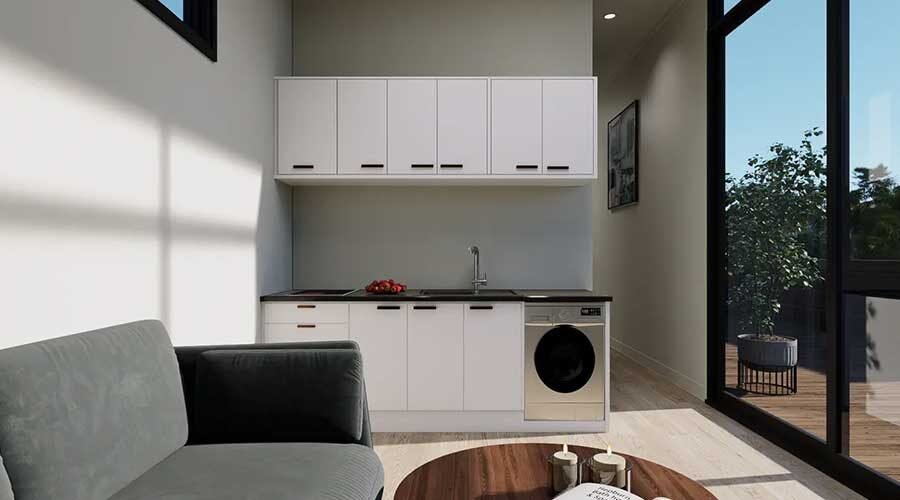Insulating and Heating Tiny Homes in New Zealand
Insulating and heating tiny homes in New Zealand can be a daunting task, especially with the country’s cold climate and high energy costs. However, with proper planning and the right materials and technologies, it is possible to create a comfortable and energy-efficient tiny home in New Zealand.
Importance of Insulation in New Zealand’s cold climate
New Zealand’s climate is generally cool and temperate, with mild to warm summers and cool to cold winters. The North Island has a slightly milder climate, while the South Island is generally cooler. In winter, temperatures can drop to below freezing in some regions, making it essential to have proper insulation and heating systems in place to keep tiny homes warm and comfortable.
One of the most critical factors to consider when insulating a tiny home in New Zealand is the type of insulation used. Insulation helps to keep heat inside during winter and prevents it from entering during summer. Therefore, it is essential to choose insulation materials that have a high R-value, which measures their ability to resist heat flow.
Options for insulation materials
Some of the insulation options available in New Zealand include fibreglass, cellulose, and foam. Fibreglass insulation is made of tiny glass fibres and is one of the most popular insulation materials used in New Zealand. It is available in batts or rolls and can be easily installed by cutting it to size and fitting it between the studs.
Cellulose insulation is another option that is made from recycled paper and other natural materials. It is a good option for tiny homes as it is affordable and environmentally friendly. The material is blown into the cavities between the studs, providing good insulation coverage.

Foam insulation is another option that can be used in tiny homes. It is available in both rigid and spray foam forms and has a high R-value. It is more expensive than other types of insulation, but it provides excellent insulation coverage and can help to reduce energy costs in the long run.
When selecting insulation materials for your tiny home, it is essential to choose a material that is suitable for your specific needs and constraints. The insulation material should be compatible with the building materials used in your tiny home, easy to install, and have a high R-value.
Heating options for tiny homes in New Zealand
Another critical factor to consider when heating a tiny home in New Zealand is the type of heating system used. There are several options available, including electric heaters, gas heaters, and wood-burning stoves.
Electric heaters are the most commonly used heating system in New Zealand. They are easy to use and install, and they come in various sizes and styles. They can be used to heat individual rooms or entire tiny home. However, electric heating can be expensive, and it can cause energy bills to soar during the winter months.
Gas heaters are another option that can be used in tiny homes. They are more energy-efficient than electric heaters, and they are also cheaper to run. However, gas heaters require a constant supply of gas, and they need to be serviced and maintained regularly to ensure their safety and efficiency.
Wood-burning stoves are a popular heating option in New Zealand. They are environmentally friendly, provide a comfortable and cosy atmosphere, and can also be used for cooking. However, they require a constant supply of wood, and they need to be regularly cleaned and maintained to ensure they are safe and efficient.
Strategies for keeping tiny homes warm in New Zealand
In addition to choosing the right insulation and heating systems, there are other strategies that can be used to keep tiny homes warm in New Zealand. One of these strategies is sealing air leaks, which can help to prevent heat from escaping from the tiny home.
Draft excluders and door snakes can also be used to keep cold air from entering the tiny home. These can be placed at the bottom of doors and windows to prevent drafts from entering.
Installing energy-efficient windows and doors is also essential to prevent heat loss in the tiny home. These windows and doors are designed to reduce heat loss and improve the overall energy efficiency of the home. They are typically made from materials that provide better insulation than traditional windows and doors, such as double or triple-glazed glass and insulated frames.
Importance of proper ventilation
Proper ventilation is also important in a tiny home. Moisture build-up can occur in tightly sealed homes, leading to problems such as mold and mildew. To prevent this, it is crucial to ensure that there is adequate ventilation in the home. This can be achieved by installing vents in the roof and walls or using mechanical ventilation systems that help to regulate airflow.

Incorporating renewable energy systems
In addition to these strategies, incorporating renewable energy systems into the tiny home design can help to reduce energy costs and make the home more environmentally friendly. For example, solar panels can be installed to generate electricity for the home, and a solar water heating system can be used to provide hot water. These systems may require an upfront investment, but they can help to reduce energy costs in the long run.
Overall, insulating and heating a tiny home in New Zealand requires careful planning and consideration. It is important to choose insulation materials and heating systems that are suitable for the specific needs and constraints of your tiny home. Additionally, implementing strategies such as sealing air leaks, installing energy-efficient windows and doors, and ensuring proper ventilation can help to keep the home warm and comfortable while reducing energy costs.
In conclusion, building a comfortable and energy-efficient tiny home in New Zealand is achievable with the right materials, technologies, and strategies. By carefully planning and designing the insulation and heating systems, incorporating renewable energy systems, and implementing other energy-saving strategies, it is possible to create a warm and cosy home that is affordable and environmentally friendly.
Browse different Tiny House makers in New Zealand for building your beautiful tiny house.
Cover Image Source: Podlife.



